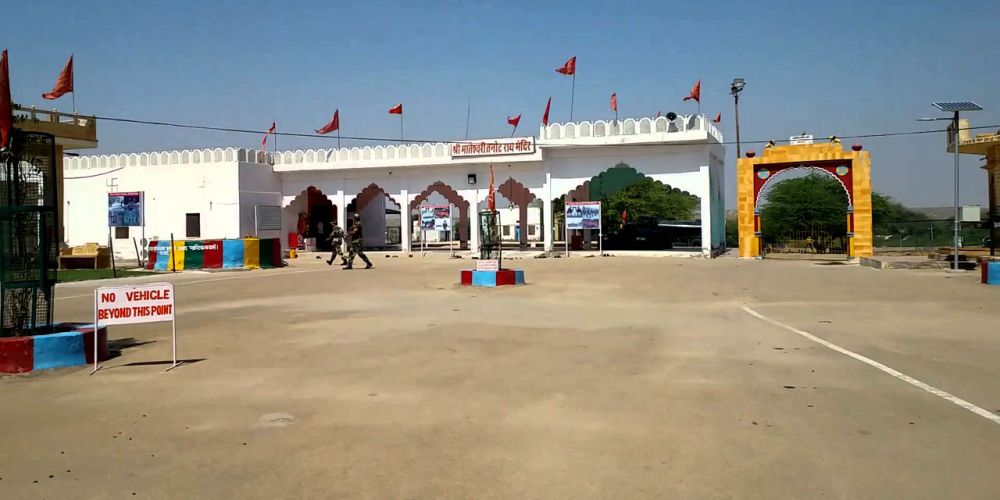

The Tanot Mata Temple located near Jaisalmer, Rajasthan, India, is not only a religious site but also a testament to the history and the cultural heritage of the region. The temple is dedicated to Tanot Mata, a form of the divine goddess Hinglaj Mata. According to legend, the temple dates back to the 8th century AD and has since been a witness to many historical events.
The legend associated with Tanot Mata speaks of the battles fought in the vicinity and the miraculous protection the temple provided to the Indian soldiers during the Indo-Pak wars, particularly the Battle of Longewala in 1971. Tales of the temple's untouched state in the midst of heavy shelling have contributed to its aura and the reverence it commands among the locals and military personnel alike.
Initially, the remote location of the Tanot Mata Temple meant that it was visited mainly by the local populace and military personnel. However, its fame burgeoned post the 1971 war. The temple came under the direct supervision of the Border Security Force (BSF) of India after the war, making it unique among religious sites. The area's security is maintained by BSF, which also assists in the temple management.
Over the years, the temple has become an important tourist destination in Jaisalmer for those interested in history, as well as for pilgrims. The construction of roads and improved infrastructure in recent years has made the temple more accessible, and thus, more visited.
In recent years, the temple has witnessed a steady increase in tourist footfall. This surge is part of a broader trend in the region, with visitors seeking to explore off-beat and culturally rich sites. The rise of heritage tourism has also played a major role in bringing Tanot Mata Temple into the limelight.
Furthermore, the temple has become a stopover for those venturing towards the Sam Sand Dunes or the Thar Desert excursions. The government and various tourism promotion bodies have recognized the potential of such sites and are actively promoting them within their tourism campaigns.
Today, visitors to the Tanot Mata Temple can explore the on-site museum that showcases the history of the temple, the region, and the role it played during the Indo-Pak wars. Tourists often time their visit during the Navratri festival, when the temple premises come alive with festivities and spiritual fervor.
With the increase in tourism, there has also been a concerted effort to promote sustainable tourism practices to ensure that the temple and its surroundings are not adversely affected by the increase in visitors. These efforts include better waste management systems, initiatives to conserve water, and educating visitors on the cultural and historical significance of the temple.
The future of tourism at Tanot Mata Temple looks promising with a focus on sustainable development and promotion of cultural tourism. The Rajasthan tourism department, along with local authorities, is keen on preserving the sanctity and historical value of the temple while providing a rich cultural experience to visitors from across the globe.